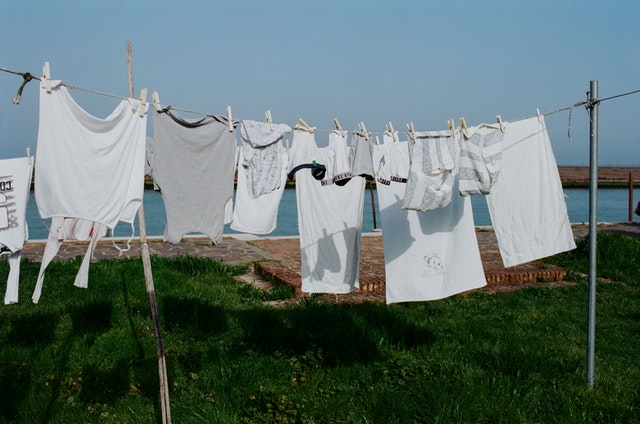Admittedly, we have all taken our most valued garments to the dry cleaners, perhaps out of sheer convenience but mostly because we were not quite sure how to clean them professionally. And while there is no shame in visiting the dry cleaners every so often, there are plenty of ways of working around these occasional visits.
Other than dropping your dirty laundry into a washing machine and going about your day, did you know there are alternative methods of washing your clothes professionally? As convenient and time-saving washing machine cleaning can be, it is unsuitable for certain fabrics and might lead to “over-cleaning,” i.e., gradual wear and tear on delicate fabrics over multiple cycles. Here are five different methods you can use to wash your clothes professionally and add more variety to this banal task.
1. Vacuuming
Most people regularly vacuum their sofas, carpets, and curtains to remove dirt, oblivious that vacuuming also works well for clothes. Essentially, vacuums work by sucking out dirt and dust. The suctioning effect of a handy vacuum works particularly well on dry dirt, allowing you to clean your clothes without getting them wet or spreading dirt to unwanted areas.
Vacuuming is also an excellent precursor to regular washing since it eliminates dirt particles that would otherwise spread stains to non-dirty areas or rub against your fabrics, potentially causing damage. That said, the only drawback of vacuuming is its ineffectiveness against wet stains.
2. Hand Washing
The term hand washing might bring to mind images of people bent over beating clothes to submission. And while some might be quick to point out the archaism of this method – thanks mostly to automatic washing machines – hand washing still has its rightful place in today’s world of automation.
Hand washing is by far the cheapest and most gentle way to wash your dirty laundry, and the beauty of the method is it works on all types of clothing except garments labeled “dry clean only.” All you need is a stain remover, a clean sink/bathtub/pail, fabric-specific detergent, a soft-bristled brush and plenty of water.
This method is simple yet important, especially when handling delicate fabrics that cannot stand even the gentlest cycles in a washer. The gist of hand washing goes something like this:
Fill a large sink/pail/basing/tub with lukewarm water
Pour in a mild detergent and stir the water until it becomes foamy
Gently submerge your clothes in the foamy water and let them soak for about five minutes
Swish your clothes from side to side and scrub stubborn stains using a soft-bristled brush
Rinse your clothes thoroughly
3. Machine Washing
Since the industrial revolution, millions of people worldwide have given up the “back-breaking” handwashing method in favor of machine washing – so much that washing machines, gas clothes dryers and electric dryers are revered as the fairy godmothers of laundering.
Nevertheless, some people end up damaging their clothes because they do not sort their garments appropriately. To clean your clothes professionally and keep them in good condition, avoid mixing regular garments with these clothes in a washing machine:
Waterproof clothes, e.g., diaper covers, raincoats and ski wear
Fine embroidery
Faux leather clothes
Anything with metal embellishments
Heavily soiled garments, especially without an initial cleaning
4. Dry Cleaning
Dry cleaning is the most optimal option for most garments and arguably the recourse of many time-constrained homemakers. As the name suggests, dry cleaning involves washing garments using a solvent rather than immersing them in water and detergent. Recent advancements in cleaning technology have brought forth eco-friendly solvents like liquid silicone, a clear, odorless and non-toxic alternative to traditional solvents.
Although it might be easier to clean clothes at home, dry cleaning is the best option when handling these types of clothes:
Heavily discolored white clothes
Beaded or sequinned clothes
Fabrics susceptible to shrinkage
Embroidered clothes
Formal clothes, e.g., suits
5. Blotting
Sometimes all you need is to spot clean a stain without spreading it to non-dirty areas or spend too much time washing an otherwise clean garment. Blotting using a clean cloth, water and stain remover or some detergent works best in such instances. You can blot various stains, including wine spills, coffee/tea spills and bloodstains to avoid washing entire garments or as a precursor to washing.
Final Thoughts
As long as you own clothes, doing laundry will always be a part of your chore list. Fortunately, it does not have to be complicated or overly time-consuming. Give either of these methods a try during your next wash, and do not be afraid to consult an experienced laundry professional when unsure of what to do.
About the Author:
Lisa Eclesworth is a notable and influential lifestyle writer. She is a mom of two and a successful homemaker. She loves to cook and create beautiful projects with her family. She writes informative and fun articles that her readers love and enjoy. You can directly connect with her on email – lisa@lisaeclesworth.com or visit her website www.lisaeclesworth.com.










